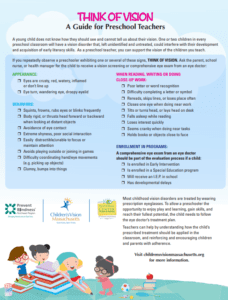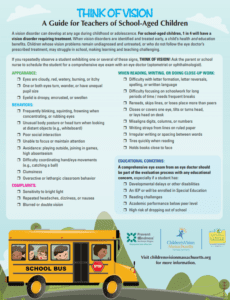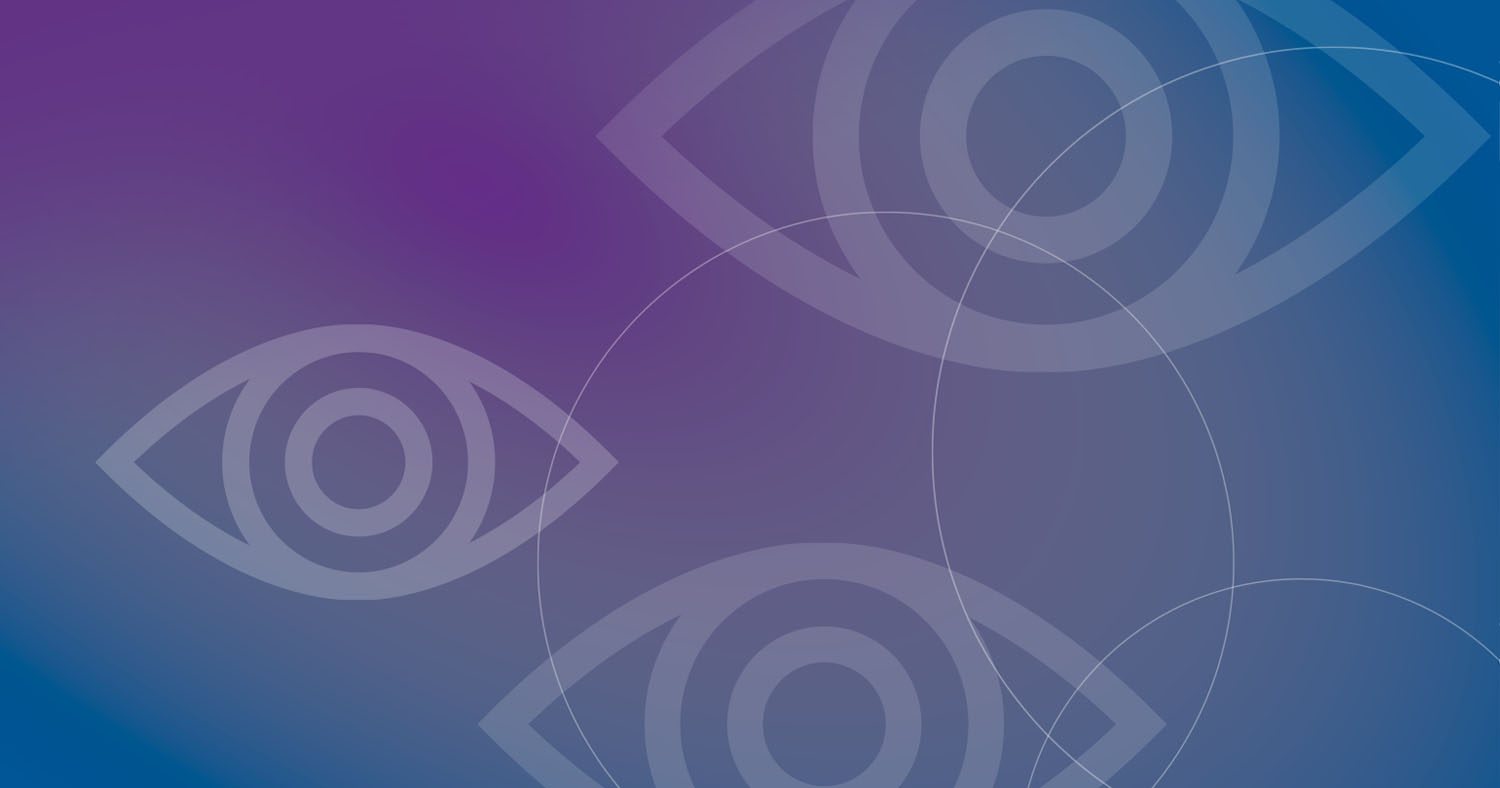A vision disorder can develop at any age during childhood or adolescence. When vision disorders are identified and treated early, a child’s health and education benefits. Children whose vision problems remain undiagnosed and untreated, or who do not follow the eye doctor’s prescribed treatment, may struggle in school, making learning and teaching challenging.
These fact sheets include signs of vision problems you may see in the classroom and a brief overview of common eye problems in children.

A young child does not know how they should see and cannot tell us about their vision. One or two children in every preschool classroom will have a vision disorder that, left unidentified and untreated, could interfere with their development and acquisition of early literacy skills. As a preschool teacher, you can support the vision of the children you teach.

A vision disorder can develop at any age during childhood or adolescence. For school-aged children, 1 in 4 will have a vision disorder requiring treatment. When vision disorders are identified and treated early, a child’s health and education benefits. Children whose vision problems remain undiagnosed and untreated, or who do not follow the eye doctor’s prescribed treatment, may struggle in school, making learning and teaching challenging.

